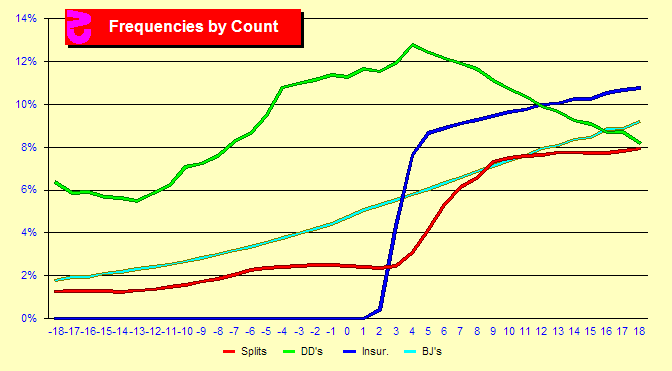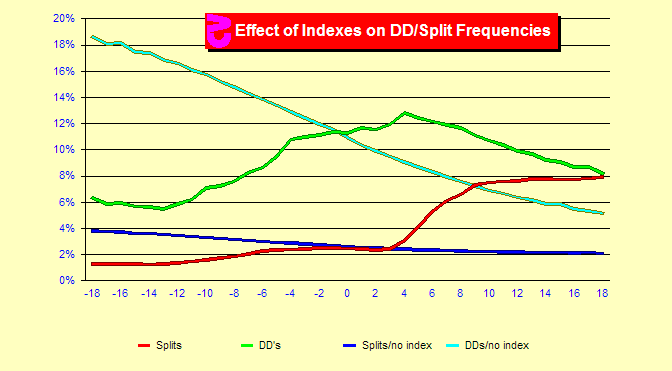by Norm Wattenberger
Splits, Doubles, Blackjacks, Insurance
|
|
This chart looks very different. Here a comparison is made between
full indexes (100+) and no indexes. Blackjacks and Insurance have
been removed. The green line is the same as in the above chart, percentage
of hands doubled with full indexes. The cyan line shows the hands
doubled when there are no indexes. The lines are completely different.
Without indexes the cyan line starts very high and drops substantially
as the count increases. This is because there are many low cards available
at low counts, both for the dealer's upcard and for your own hand,
allowing many doubles. As the count increases low cards are less common.
But, many of these doubles are a mistake at low counts since you will
probably also draw a low card and the dealer will probably not bust.
So the indexes save you from doubling when you shouldn't at low counts.
The green and cyan lines cross about true count zero. Here there are
fewer low cards making fewer of the more common doubles available.
But more indexes have been reached identifying more opportunities.
These opportunities, like 9 vs. 7 are now available because the large
number of high cards increases the likelihood that you will win the
hand. Splits displayed in red for 100+ indexes and blue for no indexes
behave in much the same manner. However, keep in mind that the very
large-magnitude indexes are rare and we should not be playing at the
very low indexes. |
|
Sim details
|
copyright © 2007, 2024, Norm Wattenberger, All rights reserved
 How
does the count affect Splits, DD's, BJs and Insurance?
How
does the count affect Splits, DD's, BJs and Insurance? How
is this affected by indexes?
How
is this affected by indexes?